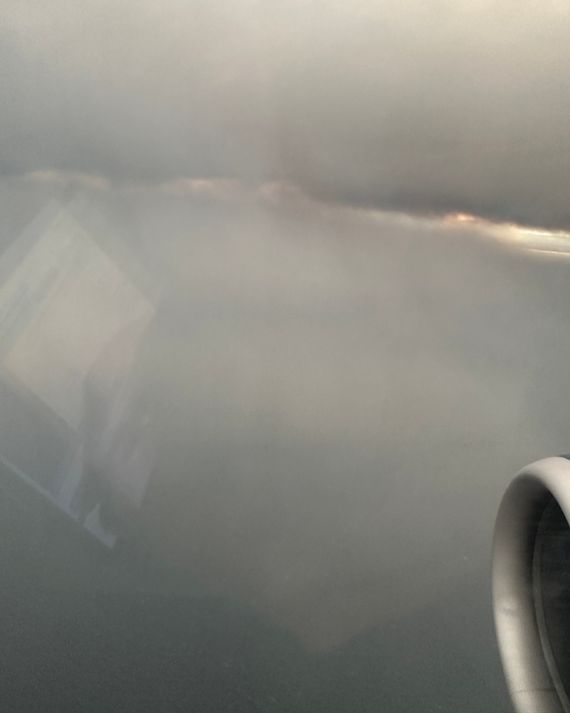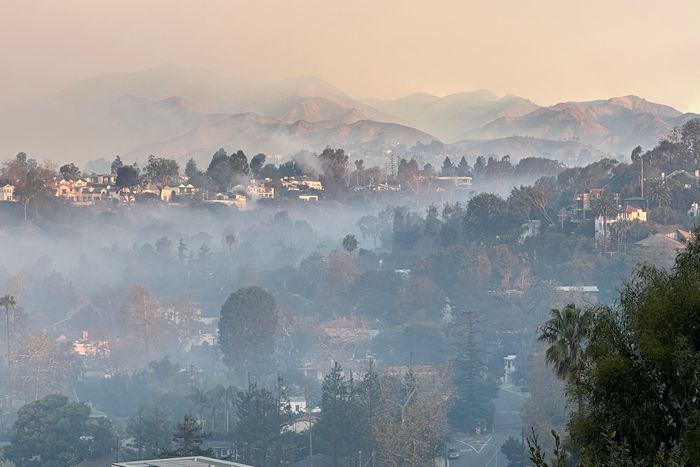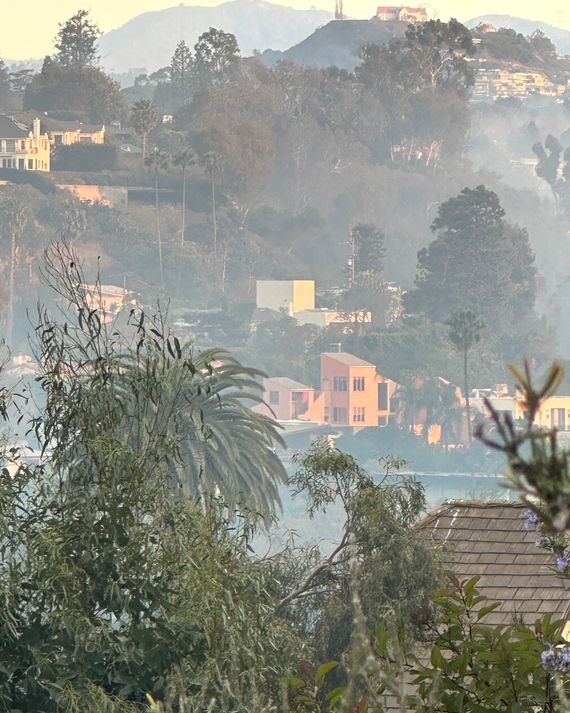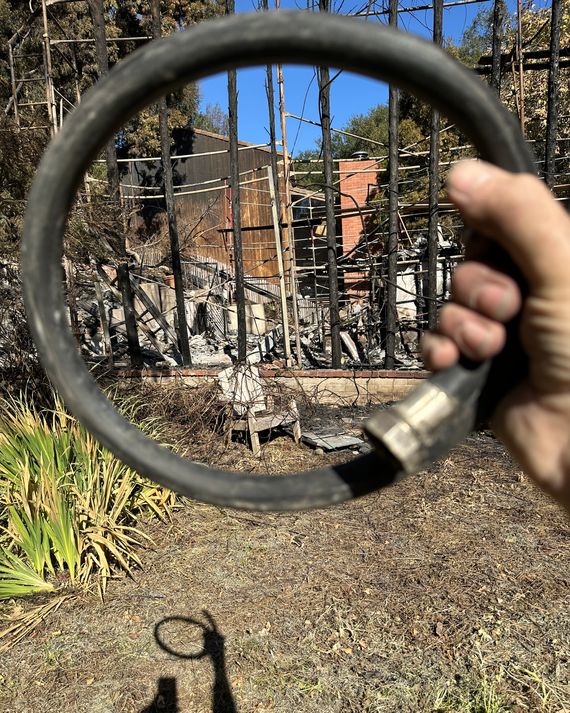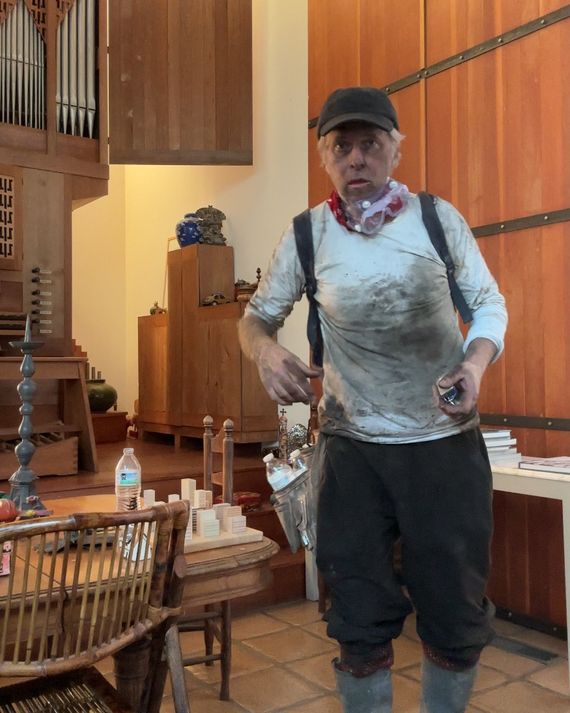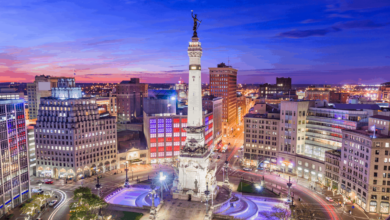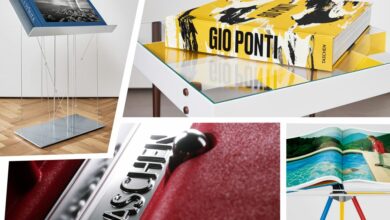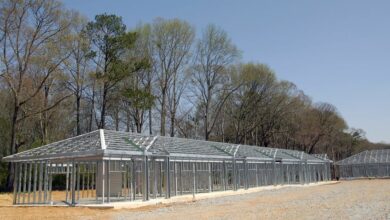The Architecture Buff Fighting Wildfires in the Palisades
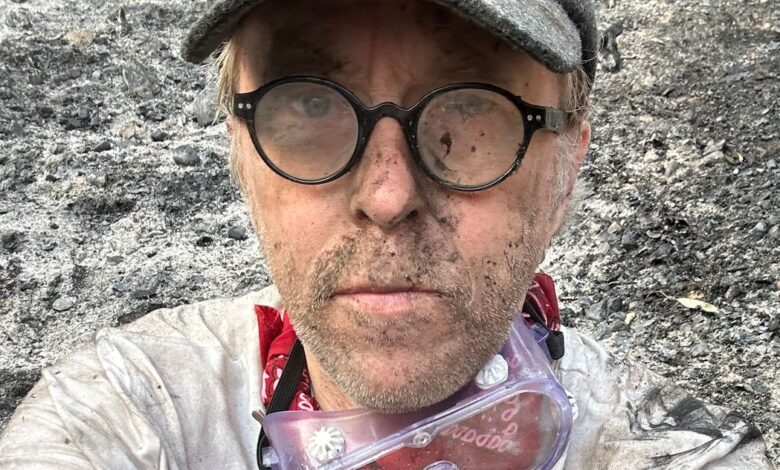
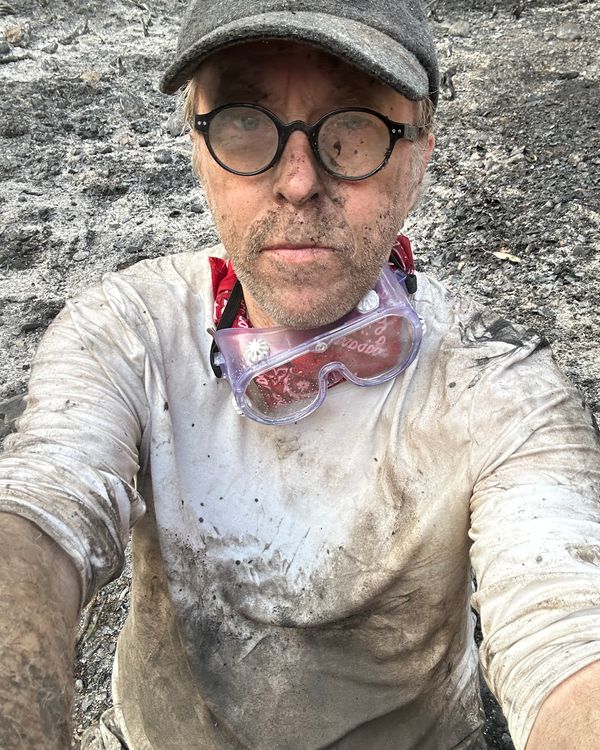
Kevin Keim, the director of the Charles Moore Foundation, has spent a week fighting fires in the Palisades.
Photo: Kevin Keim
The fires in Los Angeles are burning through architectural history, wiping out a slick 1949 Richard Neutra in the Pacific Palisades, a Brutalist spaceship by Robert Bridges that once jutted over Sunset Boulevard, and a 1991 Ray Kappe house of overlapping terraces. But the pinkish wedge of a home that Charles Moore designed for the professor and urban planner Leland “Lee” Burns in 1973 has so far survived, thanks in part to Kevin Keim.
Keim is the director of the Charles Moore Foundation, which owns the Burns House, and he flew in last week from Austin to try to save it — clearing brush and putting out small fires with a bucket and a garden hose. He’s been documenting the strange life of an architectural preservationist turned firefighter on his Instagram. I talked to him between his tours of the area about getting past police lines, learning how to fight fire, and his taste for French boots.
When did you fly in?
I had actually just flown back from Los Angeles to Austin the morning of January 7. Everything was completely hunky dory. Then when I landed, one of the first text messages I got was “The Palisades is on fire.” I got the first flight back out the next morning.
From the window of Keim’s flight into LAX on Wednesday morning.
Photo: Kevin Keim
Did you think you were going to go fight the fire yourself?
I did say, “I’ll defend the house with a garden hose if I need to.” But the fire was still kind of on the northwest side of the Palisades, and the house was not under a mandatory evacuation. There was a couple from Paris staying there who had just started a three-month residency. I called them and I said, “Look, they’re not saying you should evacuate right now legally, but you need to go right now because this is crazy.” This, I think, is when Temescal Canyon was essentially a firestorm. They went to a hotel in Santa Monica.
The next day is when it began to really go out of control. I came up to the Burns House just to clean up leaves and any debris on the ground. I remember I was up on the roof at about 2 in the afternoon, and the sounds were indescribable. There were trees and houses exploding, and the smoke was just pouring in from everywhere. And I thought, Well, this is the time for me to go. I grabbed everything I could — A Chamber for a Memory Palace, a diorama or sculpture by Charles Moore, and a very special painting by David Ligare. And works by Ellsworth Kelly, David Hockney, James Rosenquist, Jim Dine, and James Gill. I stuffed everything in the little car that I have, a Toyota Camry. And I remember I turned around and looked through the kitchen window and said to myself, “Remember this because this is the last time you’re ever going to see this house.” I fled.
Smoke in the canyons.
Photo: Kevin Keim
Where did you go?
I was staying at the house of a friend, Stephen Harby, on the other side of Santa Monica. He was a student of Charles’s at Yale and an architect. He worked with Charles his whole career. Tina Beebe and Buzz Yudell, who are also close friends, are also staying there.
But then you went back.
I was able to kind of sneak back in by going farther down the beach, then up through some public staircases. I went up to an overlook on Adelaide Drive, down the street from Frank Gehry’s house. I managed to get over there by slipping down an alley unseen.
And you saw the house was still standing? How did that feel?
A relief like no other. Tempered by the knowledge that its safety was not assured. And tempered by the reality that so many other neighbors have lost so much.
Keim’s first view of the Burns House from Adelaide Drive last week.
Photo: Kevin Keim
So why did you become a one-person fire department?
I suppose the phrase that was always coming to my mind is “The life you save may be your own,” because fires start somewhere and spread. Once a fire gets into the canyons, the fire just gets concentrated and all of the oxygen from being pulled through the canyon just fuels it. I was just trying to keep the fires out of the canyon. So I was putting all of those out, those little fires. Those hot spots — if the wind starts, it just starts carrying off all of the loose soil because everything is so dry now. And the wind will then carry the embers from the hot spots and just spread it. Everybody’s terror is the wind.
Are you hooking garden hoses up to people’s houses? How are you doing this?
Yeah, just outdoor garden spigots. But the hillsides are so steep that if we tried to bring water up from below, the higher and higher you go with garden hoses linked together, the less water pressure you have. When I got frustrated with the low water pressure, I had a big galvanized bucket that I found, and I was basically bringing the fire down to the water. So I would just load the bucket with the burning embers and logs and bring them down to the water to put them out.
I was putting my hand down in the dirt and realized it was just red hot under there. One thing I learned is that when a tree burns you might think it’s out, but the roots can continue to burn underground, and you realize that the roots are burning, so you have to just get as much water in as you can.
What kind of gear are you wearing to do this?
It’s so funny because when the pandemic started, I was rebuilding the Moore Compound back in Austin by myself, and I bought a pair of Le Chameau boots. They’re actually like Wellingtons, tall rubber boots, and I’ve gotten completely addicted to them. I’ve become famous for tramping around Home Depot in Texas dressed in those. But I like to joke that they haven’t sent me any spon offers yet. Then I wear these long Scottish socks that I’m completely addicted to, then just shorts and T-shirts or whatever.
Okay, back to firefighting. How did you start looking for hot spots?
In Rustic Canyon, two one-way streets run parallel to each other and the creek runs between to the sea, and on either side the hill is very steep. So I was walking there and noticed a lot of fire and smoke on the canyon wall. So I climbed up there and was starting to put those out and it took six hours.
Later, I saw a fire way, way up on the very top of the ridge. I climbed up there and I was able to find a hose up there, and that had really great pressure because it was going downhill. I didn’t know until the next day, when the owners reached out, that next to the house I was defending was a Ray Kappe house.
But you weren’t trying to defend exclusively famous houses.
I personally don’t believe that an architecturally significant house should be given any more priority than somebody’s home, however ordinary it is.
Keim fought back a fire near here, then learned a home close by was by Ray Kappe.
Photo: Kevin Keim
Did you happen to check on those famous houses anyway, since you were patrolling around?
Yeah. I have a dear friend who has a tiny, tiny little Richard Neutra cottage on Mesa Drive — a little green house. It’s a wonderful thing that’s sort of cantilevers over the canyon. Over there a fence, a eucalyptus, and the whole hillside caught fire. But three neighbors who’ve been hiding out here with me put that terrifying fire out.
Guys are hiding out …
They’re sort of survivalist dudes — brothers who have been there a while — plus a few other neighbors who live close together. It’s just kind of like a little, small posse. We check in with each other.
Are you all sharing techniques or anything?
Not really. What we’re doing is not advanced or anything. It’s just putting out fires.
Photo: Kevin Keim
And you’re coming in the morning and bringing buckets and stuff?
Well, for the first few days police weren’t really organized. So I was coming around sunrise — 7 or 7:30 — until 5 p.m. There’s a curfew at night, and you don’t want to be wandering around at nighttime.
But now, everything is utterly evacuated and the police have been cordoning off access. So yesterday, I decided instead of trying to climb over barriers and automatically looking suspicious, I thought, The only chance is just to be honest. So I went over and I said, “Look, I’m fighting fires. I’m helping. I have a house up there. I have an insurance paper with my address on it. Just let me through. I’m not stupid. I’ll come back out.” I managed to talk my way in, so they finally let me through. But last night I was so exhausted, I couldn’t even walk back to my car. I thought, Not only do I not have enough time to walk out before it’s legally sunset, but I just don’t want to try to fight my way back in tomorrow morning. So I just decided to stay at the house.
So you slept in the Burns House?
Yeah. I was scheduled to fly back tomorrow thinking this would be done by tomorrow, but my plan is to wait here until people are generally allowed back in so I can get the house settled. The French couple staying here sort of freaked out and flew back to Paris after decamping to Santa Monica, so I told a friend whose house burned down that she can stay here during the void. Then I’ll go back to Texas. I keep pushing back my flight.
Suiting up inside the Moore house, which was designed with a two-story great room to house a German pipe organ.
Photo: Kevin Keim
If you’re staying there now, how are you getting supplies in?
There’s a private security firm that patrols the richer section of upper Amalfi. We just make a list, and they bring it in for us — bottled water, Imodium and Advil, 12 rechargeable flashlights, batteries, four two-way radios, whole milk, coffee, half-and-half, Gatorade, Coke. We also asked for guitar picks.
The reason that the National Guard is blocking off this area is because what you’re doing is dangerous. Officials are always warning people not to try to defend their homes.
I can understand that because they don’t want to spend their time rescuing people, and I get that, but I’m out on the periphery and I have multiple means of escape if needed. I could walk down to the beach if I needed to and walk in the ocean for God’s sake. And that first day, when it really got going that day, I left. I would not call myself someone who is in peril. I’m not foolhardy, but I’m not afraid of moderate amounts of risk. Though my parents would disagree after seeing some of my videos. My dad was not happy.
It’s kind of crazy to think about how you’re an architecture person who’s now boning up on fire education.
We started the foundation in 1997, and buildings simply age along with you. As time goes on, you have to care for them. And back in Austin, I’ve noticed that once a building hits 40 years, it just needs help. But also what we’re seeing in Austin is that we have more frequent freezes now and hotter summers, humid summers. And in fact, they changed our botanical zone last year. I had to essentially rebuild the entire exterior of all of the buildings.
So your job is changing because of climate change —
I mean, that’s a little dramatic. I was actually thinking the other night about another fire when Lee (Burns, the owner) was alive, and I was out here working on the condominium over at Selby Avenue, which is another Charles Moore project, and Lee called me panicked one morning because there were reports of fire around the big Getty Center. He was in a complete meltdown. So I drove over. He was sitting at the kitchen table, and there were pills scattered all over the floor because he was trying to grab his pills to organize them. And I just turned the TV off and I said, “Look, Lee, we’re not in any danger right now. Let’s just calm down.” I was just now lying in bed thinking about that day thinking, Thank God he’s not here now. My battery is dying, by the way.
Could I ask one last question, though, which is, What are you going to do next?
I just pulled on my boots, my famous boots, and there’s a couple of guys that have generators around, so I’m hoping I can find a place to plug my phone in.
The interview has been condensed and edited for clarity.

